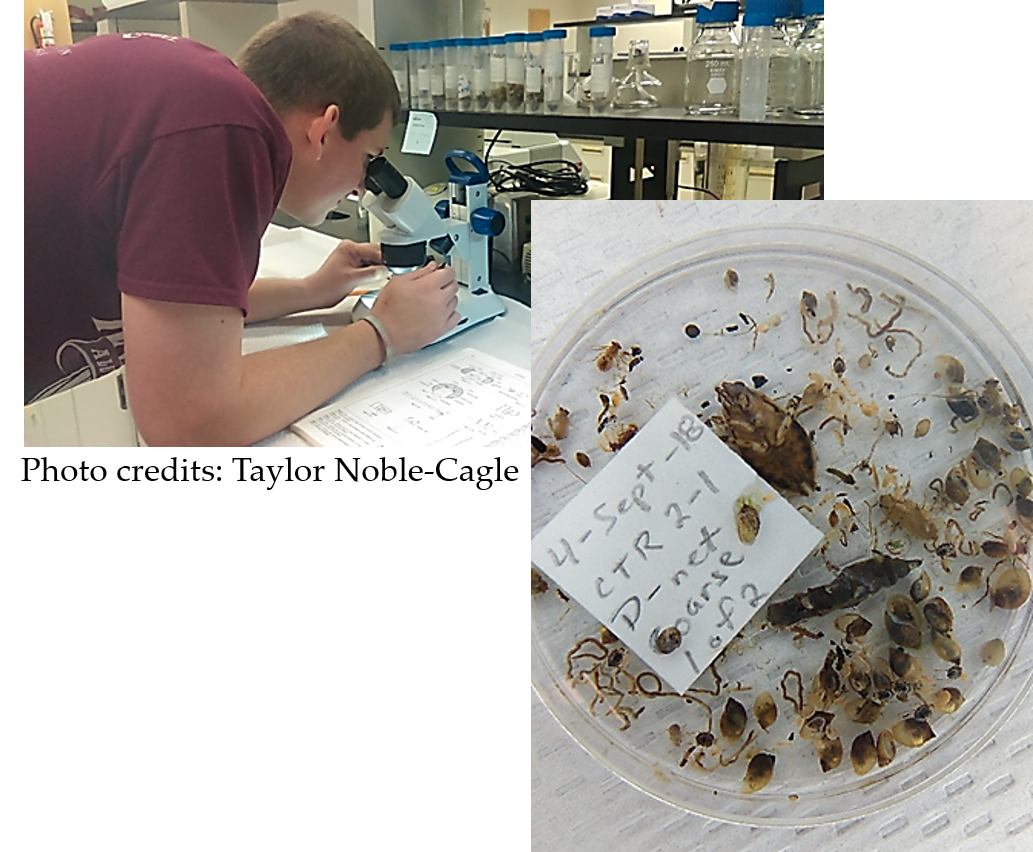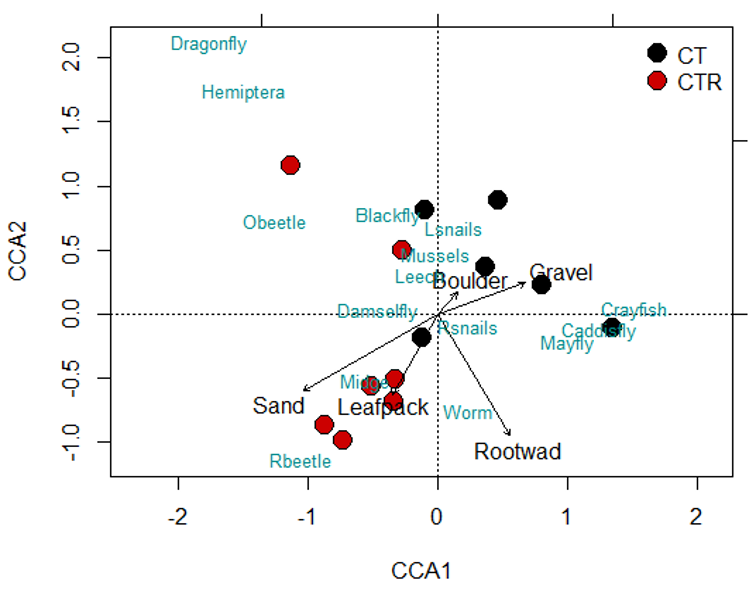Catalpa Creek Tributaries - A Preliminary Investigation
You can download a PDF copy of a recent presentation on the topic of this post here
At this point, we have completed the lab work-up of nearly all of the 2018 macroinvertebrate coarse samples from the two Catalpa Creek tributaries that we are investigating. I have been working through some preliminary analyses to get an idea of what if going on the two streams. So far, the analyses include simple community indices including species richness, diversity, and evenness, and a Canonical Correlation Analysis (“CCA”).
The community structure indices give us a glimpse of what the macroinvertebrate communities in these two streams look like overall. For instance, species richness tells us how many different speices were collected from each stream. Species diversity (Shannon Diversity, H) provides information on how the proportions of individuals from each species compare to the total number of individuals collected. And, finally, evenness (Shannon Evenness, E) gives us information on whether the each species has approximately the same number of individuals, or if there are rare and/or dominant species that are accounting for most of the abundances in the samples.
What our data shows, so far, is that the total number of individuals collected is actually higher in our impacted (“degraded”) stream than our reference (“healthy”) stream by nearly 30%; however, the reference stream has a higher species richness, diversity, and evenness! So, this hints that although we have collected more individuals from the impacted stream, the reference stream is actually more stable and may provide a wider breadth of quality habitats.

Now, community structure indices are great, but they can’t give us the whole story. This is where the CCA that I mentioned above comes in! Canonical Correlation Analysis allows us to tie species abundances from our macroinvertebrate samples to the stream characteristics that we have measured! This can help us start to tease out what stream characteristics may be leading to that increase in richness, diversity, and evenness within the reference stream.
Below is a graphical representation of our CCA. The way this works is that arrows represent the stream characteristics that we have looked at so far. The direction of the arrow indicates an increase in that specific characteristic. So, for instance, because the Sand and Gravel arrows are pointing in opposite directions, this means that areas with more sand, usually have less gravel, and vice versa - makes sense right?

The black (impacted) and red (reference) dots represent individual sample sites within the two streams we are working on. The placement of those dots in relation to the arrows indicates the major stream characteristics of each site. For example, a cluster of 5 red dots are located near the end of the Leafpack arrow, which indicates that the presence of leafpacks at these sites are what sets them apart the most from the other sites we have sampled.
Finally, the blue names represent the different macroinvertebrate taxa that we are interested in. Their locations, similar to the sites we just discussed, provide information on the stream characteristic that best explains their abundance. So, if we look at the cluster of Crayfish, Caddisfly, and Mayfly, these three group fairly closly to the Gravel arrow which indicates that higher abundances of these three taxa are usually associated with higher amounts of gravel. This makes sense, particularly for caddisflies and mayflies because they are sensitive to changes in water quality and can often be found in riffle habitats, which are usually dominated by gravel.
Now that we have a snapshot of what was happening within the streams for the fall of 2018, we can continue to work through the “fine” samples and begin work on the 2019 samples. As we continue to build our dataset, we hope to eventually determine some ways that we can help to restore our impacted stream and bring back some of that biodiversity. This impacted stream is slated to be transformed into a wetland education area, so we are hopeful that we can provide those in charge in important information about the stream health before, during, and after construction of this wetland.